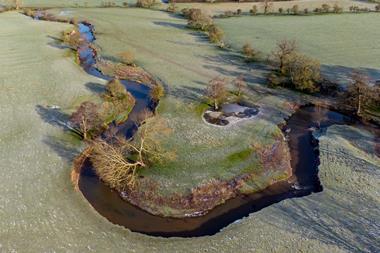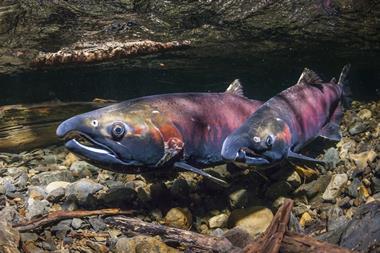The US Environmental Protection Agency (EPA) has begun the process of regulating 6PPD, a common chemical found in car tyres that was responsible for the mysterious death of salmon in the American Northwest in 2020. In response to a petition by three Native American tribes, the agency plans to finalise the rule by the end of 2024, and it will require manufacturers and importers of 6PPD to provide copies of unpublished health and safety studies to the EPA, among other things. There will be reporting requirements by tyre manufacturers and others with 90 days of publication.
The EPA’s decision to grant the petition, announced earlier this month, comes after a University of Washington study published in December 2020 conclusively linked 6PPD or N-(1,3-dimethylbutyl)-N’-phenyl-p-phenylenediamine to mass die-offs of coho salmon in urban waterways around Seattle.
The researchers, funded by the EPA and others, identified the poisonous substance 6PPD-quinone (6PPD-q) as originating from worn tyre fragments. When 6PPD reacts with ground-level ozone it breaks down into 6PPD-q. The amounts of the substance measured flowing into salmon streams during autumn rainstorms are similar to those that killed coho salmon in hours in the lab.
The petition that spurred EPA action was filed by Earthjustice in August on behalf of the Yurok Tribe, the Port Gamble S’Klallam Tribe and the Puyallup Tribe of Indians, and it requested that the agency consider prohibiting the manufacturing, processing, use and distribution of 6PPD.
Yesterday, West Coast fishing groups filed a federal lawsuit in California against 13 of the largest tyre manufacturers in the US, claiming that they are illegally killing or harming endangered salmon and oceangoing trout by using chemicals like 6PPD in their products. The complaint alleges that the tyre makers violated the US Endangered Species Act by discharging 6PPD-quinone. The Pacific Coast Federation of Fishermen’s Associations and the Institute for Fisheries Resources’ complaint outlines two dozen endangered populations of salmonids along the West Coast that have been affected by the chemical.
By autumn 2024, the EPA intends to publish an advanced notice of proposed rulemaking under the Toxic Substances Control Act (TSCA) that governs US chemical policy. The goal is to obtain more data to inform a subsequent regulatory action. Currently, the agency says there is limited data to inform a human health risk assessment for 6PPD-quinone, and therefore it plans to use other TSCA authorities to collect more information that can better elucidate and characterise risks associated with 6PPD-quinone and those linked to 6PPD.

















No comments yet